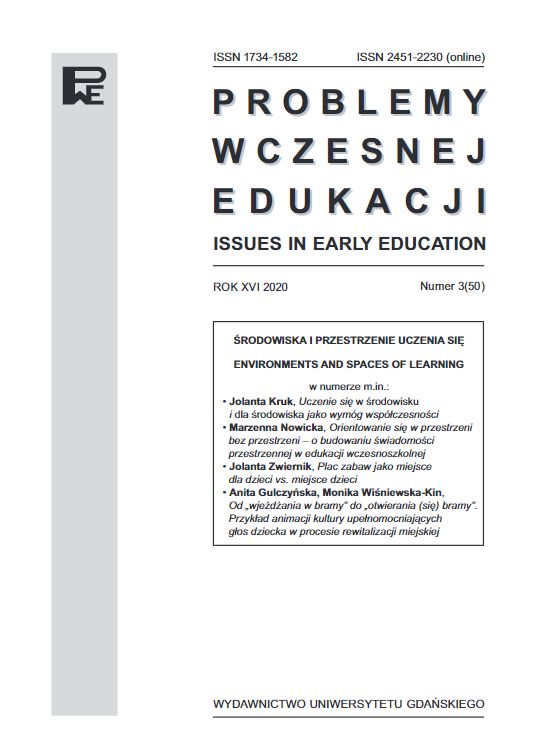Czy pojawienie się technologii informacyjno-komunikacyjnych w klasie szkolnej oznacza zmianę praktyk nauczania i uczenia się?
DOI:
https://doi.org/10.26881/pwe.2020.50.06Słowa kluczowe:
wczesna edukacja, nauczyciel, technologie informacyjno-komunikacyjne, praktyki nauczania i uczenia się, uczeńAbstrakt
Research on technology integration in school classrooms convinces that digital technologies are closely related to the discourse of educational change. What really changes when digital technology is used in the classroom? This is the driving question for the present study. This research contributes knowledge on learning and teaching practices in 19 early education classrooms observed over two school semesters. The design of teaching and learning with tablet technology was explored using the didactical design framework. This perspective focuses on both teachers’ practices and students’ learning activities in the classroom and how tablet technology is integrated into teaching and learning practices. Although the research project was performed on a small scale, it can be defined as one that documents the changes to learning and teaching practices happening in the traditional educational culture of the schools under analysis. These changes were identified through the data collected by means of structured classroom observation (283 teaching hours) and interviews with classroom teachers. The analysis resulted in three distinct sets of emergent teaching and learning practices and a series of conflicts and tensions teachers experience in their everyday tablet-mediated teaching practices.
Downloads
Bibliografia
Dylak S. (2013), Architektura wiedzy w szkole. Warszawa, Difin.
Jahnke I., Kumar S. (2014), Digital Didactical Designs: Teachers’ integration of iPads for learning centered processes. „Journal of Digital Learning in Teacher Education”, 30(3).
Jahnke I., Bergström P., Mårell-Olsson E., Häll L., Kumar S. (2017), Digital Didactical Designs as research framework: iPad integration in Nordic schools. „Computers & Education”, 113.
Klus-Stańska D. (2011), Dlaczego szkolna kultura dydaktyczna się nie zmienia? „Studia Pedagogiczne”, 64.
Klus-Stańska D. (2012), Wiedza, która zniewala: transmisyjne tradycje w szkolnej edukacji. „Forum Oświatowe”, 46(1).
Puentedura R. (2014), SAMR Model. http://sites.google.com/a/msad60.org/technology-is-learning/samr-model, 1.02.2016.
Pyżalski J. (2017), Małe dzieci w świecie technologii informacyjno-komunikacyjnych – pomiędzy utopijnymi szansami a przesadzonymi zagrożeniami. Łódź, Wydawnictwo „Eter”.
Säljö R. (2010), Digital tools and challenges to institutional traditions of learning: technologies, social memory and the performative nature of learning. „Journal of Computer Assisted Learning”, 26.
Wrońska M. (2017), Technologie informacyjne w edukacji – stan obecny i perspektywy ich zastosowania. „Lubelski Rocznik Pedagogiczny”, 36(4).

 Uniwersyteckie Czasopisma Naukowe
Uniwersyteckie Czasopisma Naukowe





